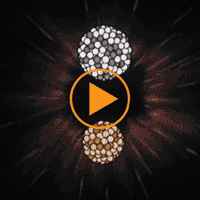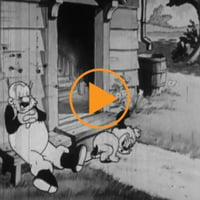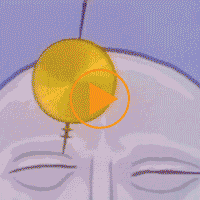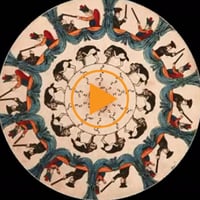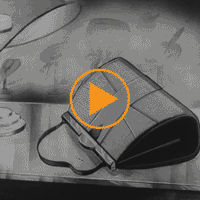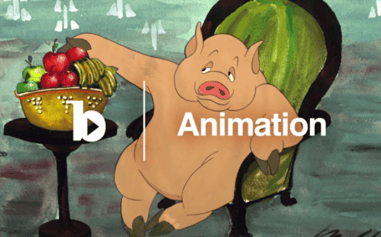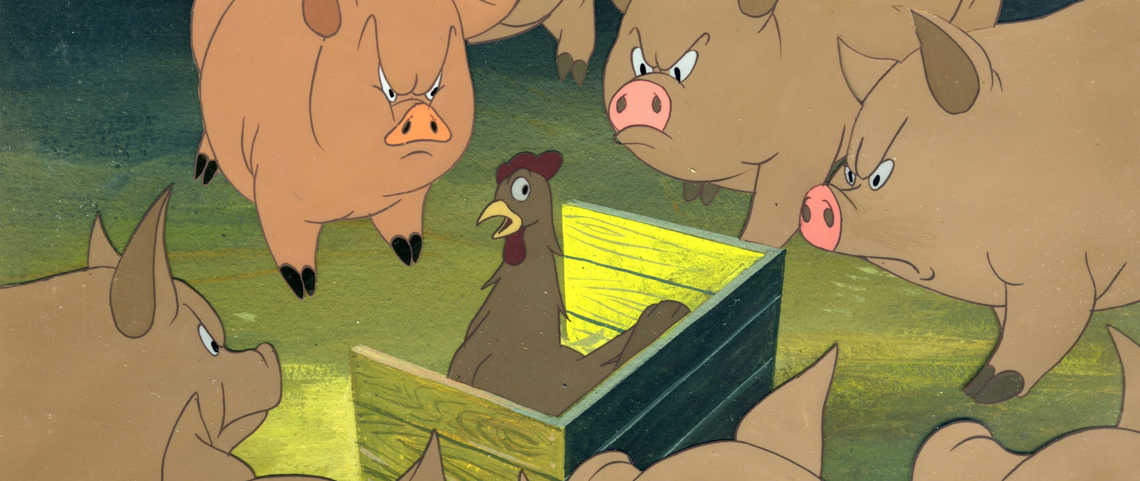
The World of Animation in the Bridgeman Archive
“Animation is not the art of drawings that move but the art of movements that are drawn.”
— Norman McLaren
Animation is the means by which still images are made to appear as if they are moving – at least, in the traditional sense.
In the past, 2D images were drawn on clear cells with slight modifications between them – an arm gradually moving, for example – and when these are viewed in succession, the figure appears to move.
With the advent of digital technology, computer and 3D animation is now perhaps the most popular style of animation, which can be seen utilised in many popular contemporary movies. Traditional hand drawn animation and stop motion animation each have their own unique appeal, however – and all kinds of animation are represented in the archive from a variety of cultural backgrounds.
Click here for a selection of our scientific and educational films. Fascinating imagery is used to convey distinct messages in productions primarily aimed at children. Discover how electricity can be utilised for modern living, and how nuclear energy has changed society. Some of these films have political undertones, and many are very much of their time.
Cartoons are the timeless commercial animations which have been popular with all ages since they began to be used for entertainment. We hold a large selection of both black and white and colour cartoons. We hold comedic, informative and historically significant cartoons, as well as several oddities you may not have heard of before!
Stop-motion animation, where figures or items are photographed, moved slightly, and photographed again is used on physical objects as opposed to drawings – playing these images back quickly one after another gives the illusion of movement as each picture forms a frame of film. This animation method can be used to give things like stick figures and 3D paper models a life of their own, and is still very much popular today in spite of the famously long and painstaking time of production these films require.
The Halas and Batchelor Collection
Bridgeman Footage proudly represents the legendary Halas & Batchelor collection.
Formed in 1940, the Halas & Batchelor animation studio occupies a unique place in British cinema. Pioneered by John Halas and Joy Batchelor, the studio became one of Europe’s most influential producers of animated films right up into the 1970s. Bridgeman Footage represents a wide selection of short and feature length films from this collection, including historic gems such as Animal Farm, Sleeping Beauty, Snip and Snap and The Owl and the Pussycat.
We hold a large collection of 1800’s phenakistoscopes, which have been digitally restored and animated to provide a sense of motion. The Phenakistoscope was a Victorian-era parlour toy, and was operated by moving a spinning disc past a slitted tube. Looking through the tube, coupled with the fast motion of the disc gave the impression the figures were moving. Occasionally these items are seen as the precursor to modern animation.
A wide variety of characters – humans, demons and animals – can be seen in endless, looping animation as well as some incredibly surreal and strange creatures such as a bug-eyed lamppost eating a man and disembodied heads spitting out blue spheres.
Prior to World War II, animation was seen primarily as a form of entertainment for children. After the attack on Pearl Harbour in the USA however the American Army made substantial efforts to work alongside animation studios such as Walt Disney to produce informative and comedic propaganda with the sole aim of informing and preparing all areas of society for the war. Children could be targeted, as well as their parents who would typically also be watching.
In the example above, the Squander Bug is used to ridicule and mock the Nazis, as well as providing an incentive for viewers to save their cash – to waste it would be to support the squander bug!
The Bridgeman Animation Showreel
Discover our animation showreel. Showcasing highlights from our eclectic collection of vintage animation, this is the perfect place to start. Securing permission to use is simple: all items shown here are fully available to license from Bridgeman Footage.
Remember, our archive of exclusive footage clips is growing all the time so there is always something new to discover.
We offer free research, so please visit our contact page if you need help sourcing anything from the archive.

